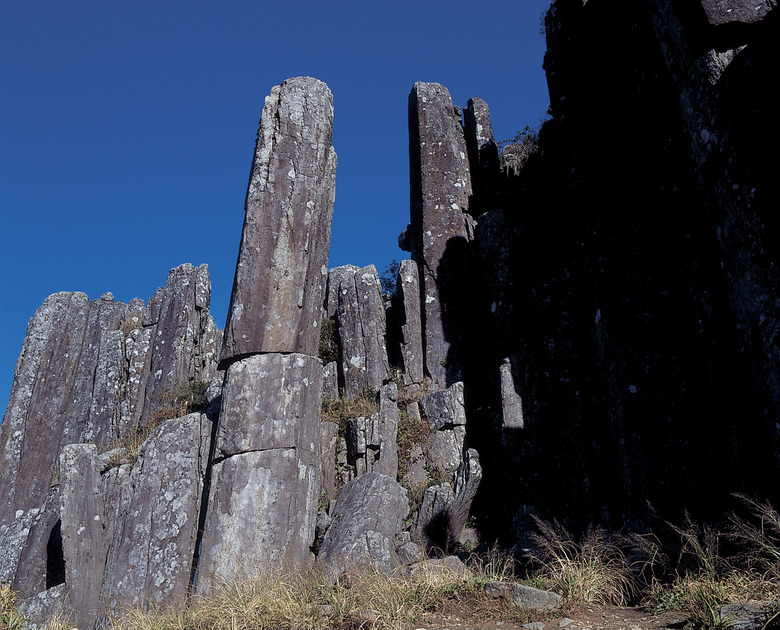Why Does Basalt Weather Faster Than Granite?
The Earth's crust is made up of 3 different kinds of rocks and minerals; sedimentary, metamorphic and igneous. The classifications depend on how the rock or mineral was formed. Both basalt and granite are igneous rocks, which are made up of magma or molten lava after it cools. While both basalt and granite are similar to each other, they also have characteristics that distinguish them from each other.
Basalt Formation
Basalt Formation
Basalt forms when magma from the ocean surfaces through the crust. It is a very prominent rock and comes from nearly all volcanoes in the ocean. Basalt cools very quickly, in a few weeks or months, which leaves little time for crystals to form. It's very fine-grained and it's difficult to determine its exact mineral composition.
Granite Formation
Granite Formation
Granite is the most abundant rock on the Earth's surface. It forms on the continents, as opposed to the ocean, underground. It cools slowly and takes thousands to millions of years to form, which leaves the crystals large enough to view with the naked eye.
Weathering
Weathering
Weathering, how rocks break down, can happen in a multitude of ways, including adding water and freezing, impacting plant roots, impact from another object and when minerals expand. Basalt weathers faster than granite because it is not as hard and it's easier for outside substances to impact and manipulate its structure.
Composition of Granite
Composition of Granite
Granite, much lighter in color than basalt, contains high amounts of quartz. Quartz is a glas-like mineral and very hard with no cleavage or weak spots.Orthoclase has 90-degree cleavage and is pink, white and shades of gray. It contains large amounts of quartz in some areas, making it harder to break, even with cleavage. The third mineral in granite is plagioclase, which has two individual degrees of cleavage, each 90 degrees. Granite breaks in horizontal planes.
Composition of Basalt
Composition of Basalt
Basalt is primarily made of the mineral oblivine, which has no cleavage or planes of weakness. The second most abundant mineral is pyroxene, which has 90-degree cleavage and breaks easily. Plagioclase, which is typically light to dark gray in color, also has 90-degree cleavage and a broken appearance due to fractures. Since 2 of the 3 minerals have cleavage, basalt is likely to break and weather in certain conditions. Basalt splits in columns.
Cite This Article
MLA
Rumble, Amanda. "Why Does Basalt Weather Faster Than Granite?" sciencing.com, https://www.sciencing.com/why-does-basalt-weather-faster-than-granite-13406864/. 21 July 2017.
APA
Rumble, Amanda. (2017, July 21). Why Does Basalt Weather Faster Than Granite?. sciencing.com. Retrieved from https://www.sciencing.com/why-does-basalt-weather-faster-than-granite-13406864/
Chicago
Rumble, Amanda. Why Does Basalt Weather Faster Than Granite? last modified March 24, 2022. https://www.sciencing.com/why-does-basalt-weather-faster-than-granite-13406864/
